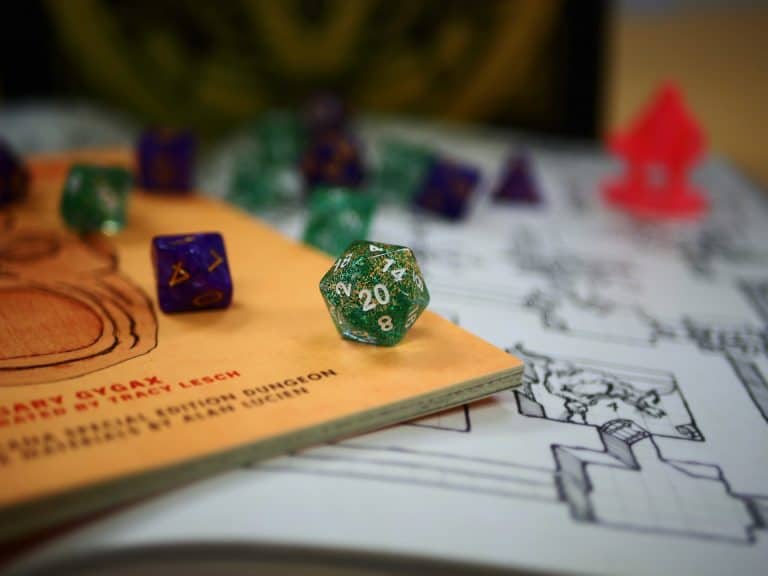Armor Class in D&D | How to Calculate AC 5e
Armor Class is the most targeted defensive statistic in 5e. Your AC is attacked any time a weapon is swung, a laser is casted, or a dart trap is triggered. Each point of AC means an attacker must roll 1 higher to deal damage to you.But… AC can be kinda hard to understand sometimes. How do you calculate it? And are there ways to raise it, especially later on? Read on to find out in How to Calculate AC 5E Guide.
How to Calculate AC 5e
At level 1, you don’t have much to base your AC on. Most changes to AC are entirely dependent on what armor you’re wearing. By default, your AC is;

AC = 10 + Dexterity Mod
Yeah, that’s it.
However, most ways to change AC is to change the base 10 number. Armor is the most common way to do this.
| Light Armor | |
| Padded | 11 + Dex mod |
| Leather | 11 + Dex mod |
| Studded Leather | 12 + Dex mod |
A strict upgrade to base is good, but you can do better with proficiencies.
If you go for the heavier armors, you might find your calculations are a bit different. Medium and Heavy armor reduces the amount of Dexterity mod you can apply to your armor class, but offer higher base AC.
| Medium Armor (up to +2 from Dexterity Modifier) | |
| Hide | 12 + Dex mod (max 2) |
| Chain Shirt | 13 + Dex mod (max 2) |
| Scale Mail | 14 + Dex mod (max 2) |
| Breastplate | 14 + Dex mod (max 2) |
| Half Plate | 15 + Dex mod (max 2) |
| Heavy Armor (No Dexterity modifier) | |
| Ring Mail | 14 |
| Chain Mail | 16 |
| Splint | 17 |
| Plate | 18 |
If you can, try to not use Hide Armor or Ring Mail. They are strictly worse than Studded Leather and Breastplates/Half Plates, respectively.
In addition, if you equip a shield in a hand that doesn’t have a weapon, you gain another +2 to AC. This stacks with armor class from weapons. If you’re proficient with shield, and using a 1 handed weapon, there’s no downside to wielding a shield as well.
Armor and Shields can gain numerical bonuses to AC (though it’s rare on shields!). Enchantment bonuses can give between +1 to +3 to your AC.
See Our Complete Guide to Armor in 5E
Other Ways: Unarmored Defense
Some classes and races have alternate ways to change your base AC. The Barbarian and Monk can add an additional statistic to their AC if they’re not wearing armor (Constitution for Barb, Wisdom for Monk). Unarmored Defense may or may not allow the character to use Shields.
Early on, you may want to consider wearing Medium armor for Barbarians, since their Dexterity is low anyways and their Constitution might not beat Half-Plate’s +5. Monks can’t wear any armor if they want to benefit from other class abilities, so you’re stuck with adding Wisdom.
A select few races also can benefit from unarmored defense. This is usually called Natural Armor. The Lizardfolk, for example, has Natural Armor of 13 + Dexterity. Similar to Barbarians, most characters with Natural Armor can use shields and still benefit.
Magic
Mage Armor is the most common way for spellcasters to get a decent boost to AC. That sets their base at 13, just like Natural Armor (and better than Studded Leather!)
A few spells can boost your AC temporarily, too. Shield gives a +5 to one attack. Guardian of Faith, Haste, and Warding Bond can give a smaller, but long-lasting boost to AC. And Barkskin sets your AC to 16 (but prevents using shields!).
Cover
A little-known method of getting AC. If you’re behind cover that protects ½ of your body, you gain +2 AC. Behind cover that protects nearly all of you (3/4ths cover), you get a +5. It’s not common, but keep it in mind, especially if you’re a ranged character!
Conclusions
Other than the ways listed above, there’s a ton of class features that can give bonuses to AC. Make sure you take note of them, and where they can be applied!
And that’s it. Most of the time, without class features, AC doesn’t get too much higher than 22-25. That means, even at level 20, enemies have a pretty high chance of hitting. It’s important to get your AC to a good point, but consider using abilities that also give enemies Disadvantage on attack. That way, they have two chances to whiff!
Need more D&D? See our guide on when you get feats in 5E.






